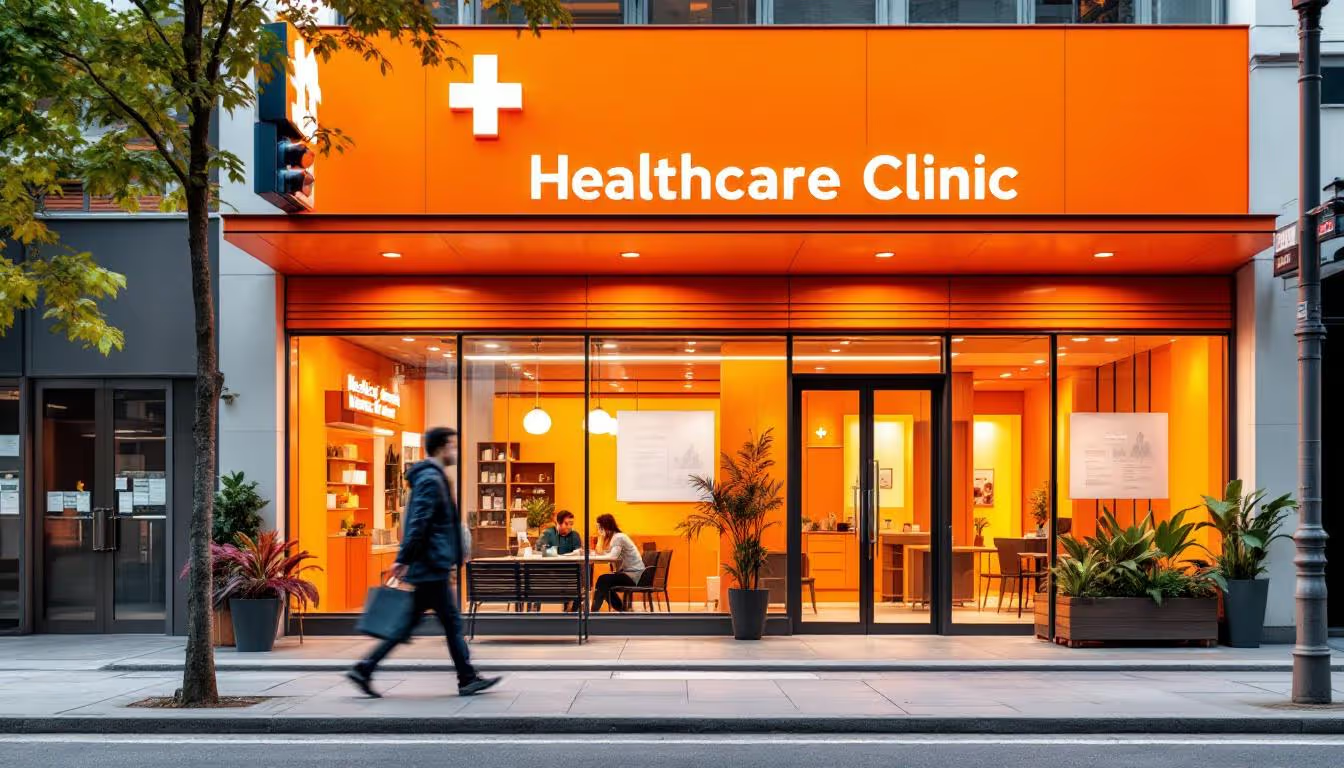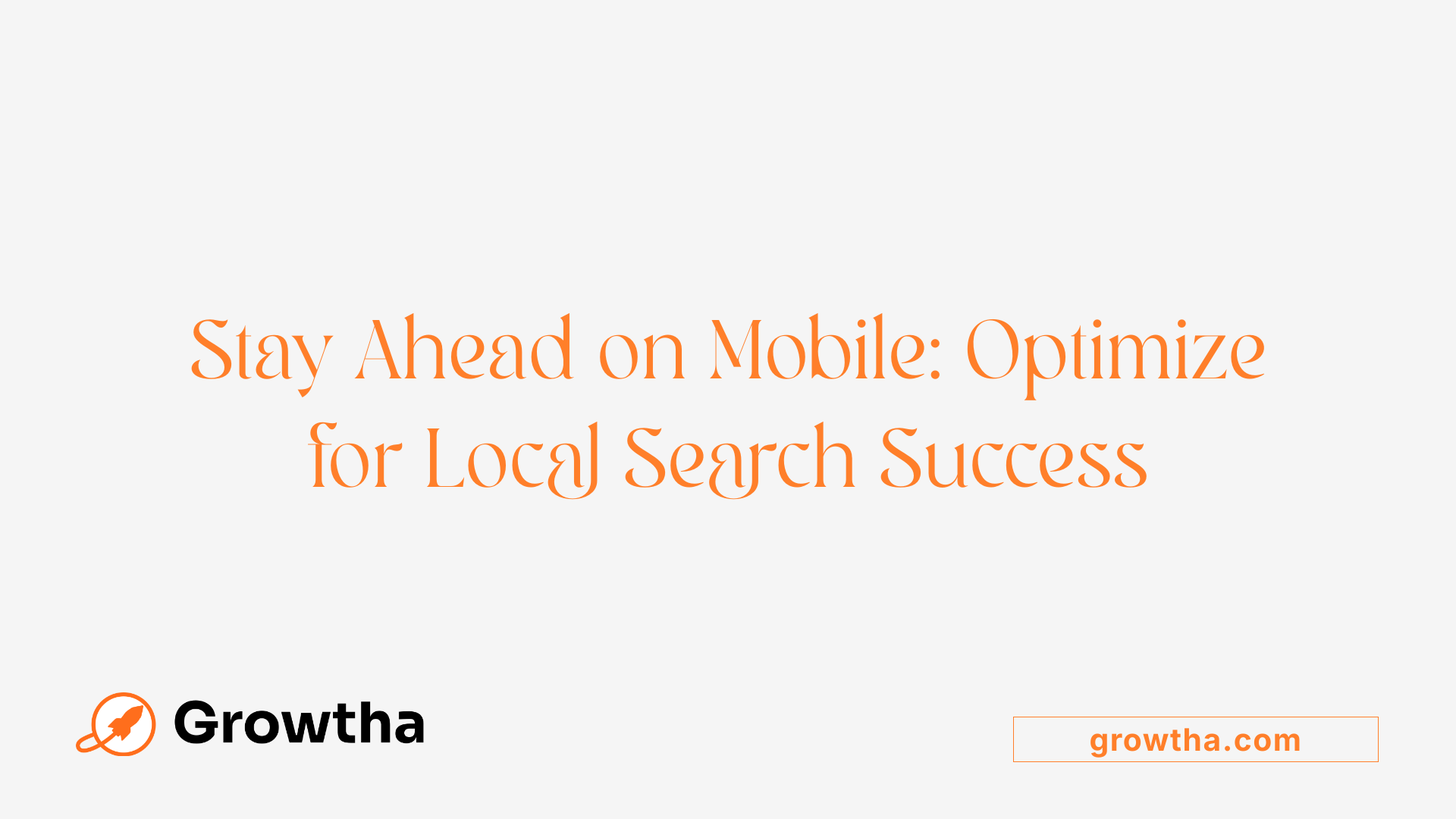Geo-Targeted SEO Keywords for Local Clinics
Boosting Local Clinic Visibility with Strategic Geo-Targeted SEO


Geo-Targeted SEO Keywords for Local Clinics
Unlocking the Power of Location-Specific Keywords for Healthcare SEO
In a competitive healthcare landscape, local clinics must leverage targeted SEO strategies to attract nearby patients effectively. Geo-targeted SEO keywords—phrases that incorporate geographic identifiers—are essential tools for enhancing visibility in local search results. This article explores the principles, techniques, and best practices for deploying geo-targeted keywords to improve your clinic’s online presence and attract your community’s patients.
Understanding Geo-Targeted SEO Keywords and Their Benefits
What are geo-targeted SEO keywords and how do they benefit local search visibility?
Geo-targeted SEO keywords are specific phrases that include geographic locations such as city names, neighborhoods, or regions. They are designed to attract local audiences by making it clear to search engines that your content is relevant to certain geographic areas. This means that when someone searches using these location-specific keywords, your website is more likely to appear in the local search results.
For example, a healthcare clinic in Dallas might use keywords like "pediatrician in Dallas" or "urgent care near me Dallas." These keywords help search engines understand where your business is located and what services you offer to nearby users.
Incorporating geo-targeted keywords into your website’s content, meta titles, and descriptions boosts your chances of appearing in local search results such as Google’s Local Pack and Maps. This targeted visibility attracts high-intent local traffic — people who are actively looking for your services nearby.
Using these keywords offers several advantages. Firstly, they increase your business’s local prominence, making it easier for nearby customers to find you. Secondly, they help attract visitors with a high likelihood of conversion — those who are ready and able to visit your clinic or call for an appointment.
In essence, geo-targeted SEO keywords serve as a bridge between your healthcare practice and the local community, enhancing your online presence and competitiveness in local markets.
Strategies for Optimizing Local SEO with Geo-Keywords
 'Geo-targeting' plays a crucial role in helping healthcare clinics and local businesses stand out in regional search results. Implementing effective strategies ensures they connect with nearby patients and clients actively searching for their services.
'Geo-targeting' plays a crucial role in helping healthcare clinics and local businesses stand out in regional search results. Implementing effective strategies ensures they connect with nearby patients and clients actively searching for their services.
One of the foundational steps is claiming and optimizing your Google Business Profile. This involves verifying your listing, ensuring NAP (Name, Address, Phone Number) details are consistent across all platforms, and regularly updating profiles with fresh photos, posts, and accurate information. A well-maintained profile enhances visibility in local packs and maps.
Building local citations and backlinks is another vital tactic. Obtaining links from reputable local directories like Practo or Justdial, engaging with community websites, and securing mentions in local news outlets boost your site’s authority and relevance in regional searches.
Creating localized content is equally important. Developing blog posts focused on neighborhood events, landmarks, or specific city-related topics captures local interest. Incorporating city and neighborhood names naturally within this content helps search engines understand your geographical relevance.
Consistency in NAP details across all online platforms—website, directories, social media, and review sites—ensures search engines view your information as trustworthy. This uniformity supports higher rankings and reduces confusion for potential patients.
Furthermore, leveraging locally-focused reviews and testimonials can significantly enhance your reputation. Encouraging satisfied patients to share positive feedback on Google, Yelp, or health-specific platforms increases social proof, which is favored by search algorithms.
In addition to these strategies, focus on optimizing your website for mobile devices, as many local searches occur via smartphones. Adding geo-specific schema markup and metadata ensures your healthcare practice appears prominently in relevant local searches.
To recap, integrating these tactics—claiming profiles, building local links, producing relevant local content, maintaining NAP consistency, and gathering positive reviews—creates a robust local SEO foundation. The ongoing effort to update and refine these elements helps your healthcare facility stay visible, authoritative, and accessible to your community.'}]}
Implementing Effective Geo-Targeted Landing Pages and Content
What elements should be included in a geo-targeted landing page?
A well-designed location-specific landing page should feature a clear Unique Selling Proposition (USP) that emphasizes the benefits tailored to the local audience. It must also include a compelling hero shot—such as images of the local area, staff, or services—that resonates with visitors.
The page should incorporate a strong Call-to-Action (CTA), guiding users to book appointments, call, or learn more. Social proof, like local testimonials or reviews, helps build trust. Lastly, highlighting local benefits, such as proximity or community involvement, enhances relevance.
How do you design location-specific content that addresses patient needs?
Creating content focused on local patient needs involves understanding regional health concerns, local events, landmarks, or community issues. Publishing blogs about regional health challenges, writing FAQs on nearby services, or providing healthcare tips tailored to the local climate can engage visitors.
This approach not only boosts SEO by including geo-specific keywords but also demonstrates a commitment to the community. Regularly updating such content ensures continued relevance and search engine ranking improvements.
How can schema markup and meta tags support local SEO?
Implementing geo-specific schema markup, such as Local Business schema, enhances search engines’ understanding of your geographic focus. Embedding location-based keywords into meta titles, descriptions, and header tags further signals relevance to local searches.
These elements improve the visibility of your web pages in local searches, Google Maps, and the Local Pack. Proper structured data can lead to rich snippets, offering additional trust signals to users.
Why is regular content updating important?
Search engines favor fresh, relevant content. Regularly updating your geo-targeted pages with new information, patient testimonials, or community news maintains high relevance. Consistent updates also demonstrate active engagement with the local community, improving rankings and credibility.
Examples of successful localized content campaigns
One example includes healthcare clinics creating blog series about local health initiatives, such as regional screening events or charity drives. These campaigns increase community engagement and search visibility.
Another case is a dental practice that developed neighborhood-specific landing pages, optimized for local keywords, and synced with their Google My Business profile. This approach resulted in higher local traffic and new patient inquiries.
| Aspect | Strategy | Outcome |
|---|---|---|
| Localized Content | Blog posts, FAQs, guides about local health issues | Increased local engagement and search rankings |
| Geo-specific Keywords | Integrating city, neighborhood names into content | Improved visibility in local search results |
| Structured Data | Schema markup for local businesses | Rich snippets and enhanced search appearance |
| Content Updates | Regularly refreshing regional information | Sustained relevance and SEO performance |
The Role of Metadata and Schema Markup in Local SEO
Geo-targeted SEO relies heavily on the effective use of metadata and schema markup to improve a website’s visibility in local search results.
Using geo-specific metadata, such as location keywords in page titles and meta descriptions, helps search engines understand the geographic focus of your content. For example, titles like "Urgent Care in Chicago" or "Pediatricians Near Downtown" clearly signal the area served, increasing relevance for local searches.
Implementing schema.org markup is another vital tactic. This structured data language enables webmasters to provide detailed information about their business, including address, phone number, hours, and services. When added correctly, schema markup enhances search engine understanding of the location and nature of your healthcare practice.
Including geographic details with schema markup helps Google and other engines display rich results—such as a prominently featured knowledge panel or local pack—making your listing stand out. It also improves the accuracy of your business information across platforms.
The impact on local search visibility is significant. Properly structured metadata and schema markup can increase your chances of appearing at the top of local results, boost your click-through rates, and attract nearby patients actively seeking healthcare services.
Why is geo-targeted SEO important for healthcare practices?
Geo-targeted SEO ensures healthcare providers are shown to potential patients searching nearby. This targeted approach enhances credibility, increases walk-ins, and helps practices compete effectively within their local community.
To maximize benefits, practices should optimize their website with relevant geographic keywords, claim and verify their Google My Business profiles, and ensure all online citations have consistent NAP information. Combining these strategies with geo-specific metadata and schema markup makes your healthcare services more accessible to the right local audience.
By leveraging these technical SEO elements, healthcare providers can significantly improve their prominence in local searches, ultimately attracting more patients from their immediate community.
Mobile Optimization and Local Search Performance

Why is mobile-friendly website design important for local searches?
With most local searches happening on smartphones, having a mobile-friendly website isn’t just a nice-to-have; it’s essential. When a website adapts smoothly to various screen sizes, users find it easier to navigate, read, and engage with content. This seamless experience encourages visitors to stay longer and take action, such as booking an appointment or calling the clinic.
How does page speed influence local rankings?
Fast-loading pages are crucial for retaining visitors and reducing bounce rates. Search engines, including Google, prioritize websites that load quickly, especially on mobile devices. Optimizing images, leveraging browser caching, and minimizing code help improve page speed, which in turn can boost your local search rankings.
What are responsive design and fast-loading pages?
Responsive design ensures your website automatically adjusts its layout based on the device used. This adaptability guarantees a consistent user experience across smartphones, tablets, and desktops. Combining responsive design with technically optimized, lightweight pages creates a fast, user-friendly platform that appeals to both visitors and search engines.
Which mobile-specific features improve user engagement?
Features like click-to-call buttons allow users to easily contact your clinic without dialing manually. Embedded maps help patients quickly find your location and get directions. Clear, accessible contact information, prominently displayed, combined with these features, increases the likelihood of turning mobile visitors into patients.
How can clinics ensure their local SEO elements are mobile-ready?
Keeping NAP (Name, Address, Phone Number) information consistent and visible on mobile sites is vital. Regularly testing the site on various devices ensures that all elements display correctly. Updating and maintaining mobile features, alongside ongoing local SEO practices, guarantees your website remains optimized for local search success.
Best practices for mobile optimization for healthcare websites?
| Practice | Description | Benefit |
|---|---|---|
| Responsive Design | Use flexible layouts that adapt to any screen size | Enhanced user experience |
| Fast Page Load | Optimize images and code for speed | Higher rankings and lower bounce rates |
| Mobile-Friendly Features | Incorporate click-to-call and maps | Increased patient engagement |
| Clear Contact Info | Display NAP prominently | Boosts local SEO and user trust |
| Regular Testing | Check website on multiple devices | Ensures consistent performance |
Prioritizing these practices helps healthcare providers stand out in local searches, attract nearby patients, and improve overall patient experience.
Monitoring and Measuring Local SEO Success

How to track and evaluate local SEO efforts for clinics?
Assessing the effectiveness of local SEO strategies requires a combination of tools and key metrics. Google Search Console and Google Analytics are essential for monitoring website traffic, user behavior, and which keywords attract visitors from specific locations. These tools help identify how well your clinic ranks for local keywords and whether your site is attracting the right regional audience.
Tracking local keyword positions using rank tracking tools like RankRanger provides insights into your visibility in the local search results over time. This helps determine if your optimization efforts are paying off.
Online reputation management plays a critical role in local SEO success. Regularly reviewing patient feedback on platforms such as Google My Business, Yelp, and other healthcare-specific directories offers valuable insights into patient perception. Analyzing reviews and ratings can highlight strengths and reveal areas needing improvement.
By combining data from these sources, clinics can identify which tactics are most effective. If certain local keywords show low rankings, content updates or additional local signals can be implemented to boost visibility.
Data-driven adjustments include optimizing website content, improving user experience, and actively managing reviews. Regular reporting with visual tools like RankRanger helps track progress and inform strategic decisions.
In conclusion, continuous monitoring and analysis using these tools and metrics enable clinics to refine their local SEO strategies, ensuring sustained growth, increased local visibility, and more patient conversions.
Integrating Geo-Targeted Marketing with Overall SEO Strategy
 Geo-targeted marketing plays a crucial role in attracting local patients and boosting healthcare practices' visibility. To effectively reach nearby communities, clinics can utilize various advertising methods that focus on specific geographic areas.
Geo-targeted marketing plays a crucial role in attracting local patients and boosting healthcare practices' visibility. To effectively reach nearby communities, clinics can utilize various advertising methods that focus on specific geographic areas.
One popular approach involves using paid campaigns through Google Ads and Facebook Ads. These platforms allow precise targeting based on location, such as cities, neighborhoods, or even specific zip codes. Developing dedicated, location-specific landing pages makes these campaigns even more relevant, encouraging more clicks and conversions.
Geofencing is another innovative technique. It uses GPS or RFID technology to deliver targeted notifications or special offers to users when they are within a designated area, such as near a medical facility or at a local event.
Integrating these paid efforts with organic search strategies enhances overall effectiveness. For example, aligning keyword strategies with location-based terms like 'urgent care in Downtown' or 'pediatrician near me' ensures consistent messaging across paid ads, website content, and social media.
Engagement on social media and local sponsorships further build trust and community presence. Sharing health tips, success stories, or sponsoring local events help create stronger local connections.
Monitoring performance metrics such as click-through rate (CTR), conversion rate, and regional landing page visits enables clinics to continually refine their geo-targeted efforts. This data-driven approach ensures marketing budgets are efficiently used to attract high-intent local patients.
In summary, combining targeted advertising methods like Google and Facebook Ads, geofencing, relevant content creation, and active community engagement creates a comprehensive geo-targeted marketing strategy. This integration not only enhances local SEO but also improves patient acquisition and retention.
Harnessing Local SEO for Community-Centered Healthcare
Implementing geo-targeted SEO strategies empowers healthcare providers to connect with their local communities more effectively. From optimizing Google My Business profiles and building localized content to leveraging targeted advertising and mobile optimization, clinics can enhance their visibility and attract nearby patients. Consistent management of reviews, citations, and schema markup ensures relevancy and credibility, while monitoring performance guides continuous improvement. Embracing these location-specific tactics positions your healthcare practice as a trusted, accessible provider within your region, ultimately driving growth, improving patient engagement, and fostering stronger community ties.
References
- Geo-targeting Your Content for Local SEO - LeadOrigin
- Geo Targeting Keywords: What It Can Do For Your Business
- Why a Local Keyword Strategy is Important for Healthcare Practices
- SEO for Hospitals - Free Local Healthcare SEO Guide by MSROI
- How Healthcare Providers Can Use Local SEO to Dominate Local ...
- Geo-Targeted Marketing for Doctors And Why You Need It
- Master Local Search with Geo-Targeted Content Strategies
- How To Target Local Keywords in Content To Boost Your Rankings
- Geo-Targeting SEO: A Game-Changer for Local Businesses
- How Do You Think My Local SEO Multi-location Geotargeting ... - Moz







